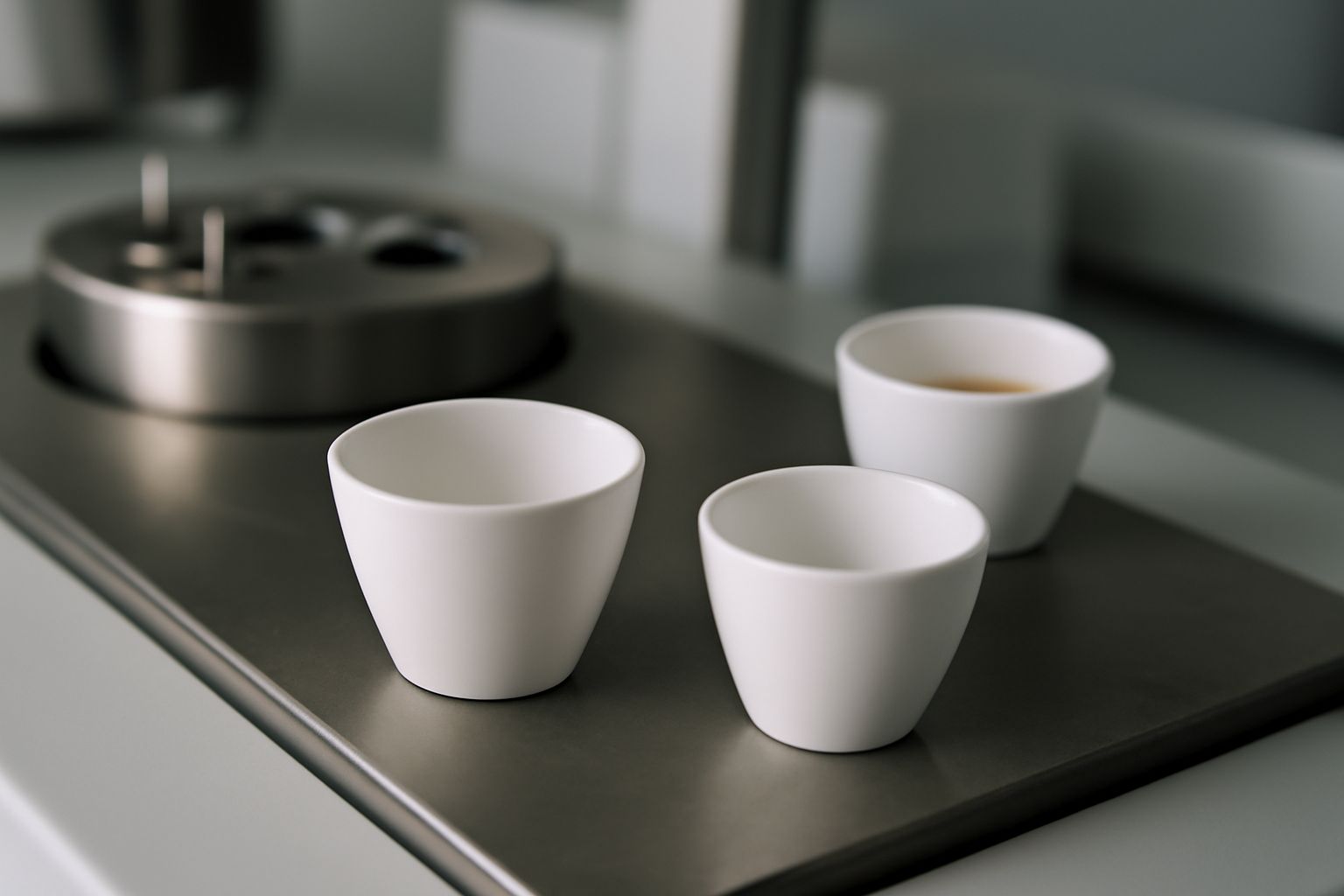Your cart is empty.
shop now
Your cart is empty.
shop now
Many labs face rising costs and unstable test results when using low-quality or single-use crucibles. These problems create extra work and make it hard to get reliable data.
Reusable crucibles, made of advanced materials such as alumina, platinum, and boron nitride, offer stable thermal conductivity and high resistance to heat and chemicals. Their consistent performance ensures precise thermal analysis for both materials science and pharmaceutical research.

I help research teams choose crucibles that match their needs for performance, cost, and sustainability. Good reusable crucibles lower waste, deliver reliable measurement, and match strict industry requirements. Here, I share my experience and key points to help you select and use the best reusable crucibles for your lab.
Some analysts still struggle with uncertainty and errors caused by disposable or unsuitable crucibles in routine and advanced thermal testing. This limits test accuracy and increases retesting costs.
Reusable crucibles are laboratory vessels made from durable materials designed to withstand repeated use at high temperatures. They are central to thermal analysis because they ensure sample purity and stable, repeatable measurements.
| Property | Purpose | Advantage | Reference |
|---|---|---|---|
| Stable thermal conductivity | Even heat transfer | More accurate analysis | Common in materials science |
| Chemical inertness | Protects sample integrity | Valid results, less contamination | Chemical research labs |
| High temperature resistance | Enables broad application | Reusable in harsh processes | TGA, DSC research |
| Smooth, easy-to-clean surface | Faster turnaround | Reduces downtime | More info |
I use reusable crucibles for all high-value tests. Their stable properties avoid signal drift and background errors. Most advanced labs now depend on these vessels for routine and specialist work.
High-temperature testing can be costly and risky with ordinary containers. Many labs run into problems such as sample loss, vessel cracking, and unpredictable data.
Reusable crucibles offer superior thermal and mechanical strength, minimizing the risk of breakage and inaccurate readings. Their robust materials handle repeated high-temperature cycles and aggressive chemicals without degrading.
| Benefit | Reusable Crucibles | Single-Use Crucibles | Industry Reference |
|---|---|---|---|
| Thermal shock resistance | Excellent | Moderate to poor | Thermal shock info |
| Chemical compatibility | Broad (alumina, platinum) | Varies by material | Alumina |
| Longevity | Many cycles | One-time use | Platinum |
| Cost efficiency over time | High (amortized cost) | High total cost | Lab finance studies |
I have measured much less drift and fewer sample losses when switching to platinum and alumina crucibles. High-temperature labs notice fewer interruptions and longer useful life, especially in TGA and STA applications.
Labs often waste budget by selecting the wrong crucible material, which causes contamination, sample reactions, or premature failure during critical tests.
Look at each application’s needs. Choose alumina for most oxides, platinum for demanding chemical environments, and boron nitride when maximum inertness is needed. This ensures compatibility, accuracy, and long product life.
| Material | Main Application | Strength | Limitation | More Info |
|---|---|---|---|---|
| Alumina | Oxides, routine thermal analysis | Wide temp. window, affordable | Not for strong acids | General lab use |
| Platinum | High-purity and reactive samples | Inert, no corrosion | Costly, soft metal | Pharma R&D |
| Boron nitride | Non-oxide ceramics, max inertness | No sticking, no reactivity | Brittle, expensive | Specialty analysis |
I advise labs to review their exact sample types and reaction conditions before ordering crucibles. Good selection improves both cost and data accuracy without risking damaged equipment or wasted time.
Many labs want to see proof before upgrading their hardware. They look for real examples where reusable crucibles solved problems and improved thermal testing.
Reusable crucibles work well for syntheses, degradation studies, and advanced product development. Data shows better sensitivity and longer run times when paired with the right methods and cleaning routines.
| Industry / Experiment | Crucible Material | Result (Advantage) | Published Source |
|---|---|---|---|
| Polymer degradation TGA | Alumina | Low contamination, stable baselines | TGA studies, ScienceDirect |
| API purity checks in pharma labs | Platinum | High sensitivity, no metal leaching | Journal of Pharmaceutical Analysis |
| Ceramic processing R&D | Boron nitride | No sticking, easy sample release | Materials Today Proceedings |
I have seen teams cut errors and boost throughput after switching to well-chosen reusable crucibles. Peer-reviewed articles and lab white papers support this change for high-precision testing in top markets.
Picking the right reusable crucible improves data quality, lowers cost per test, and meets modern lab sustainability standards. This choice boosts accuracy for every high-value experiment.
Contact technical support: info@redthermo.com